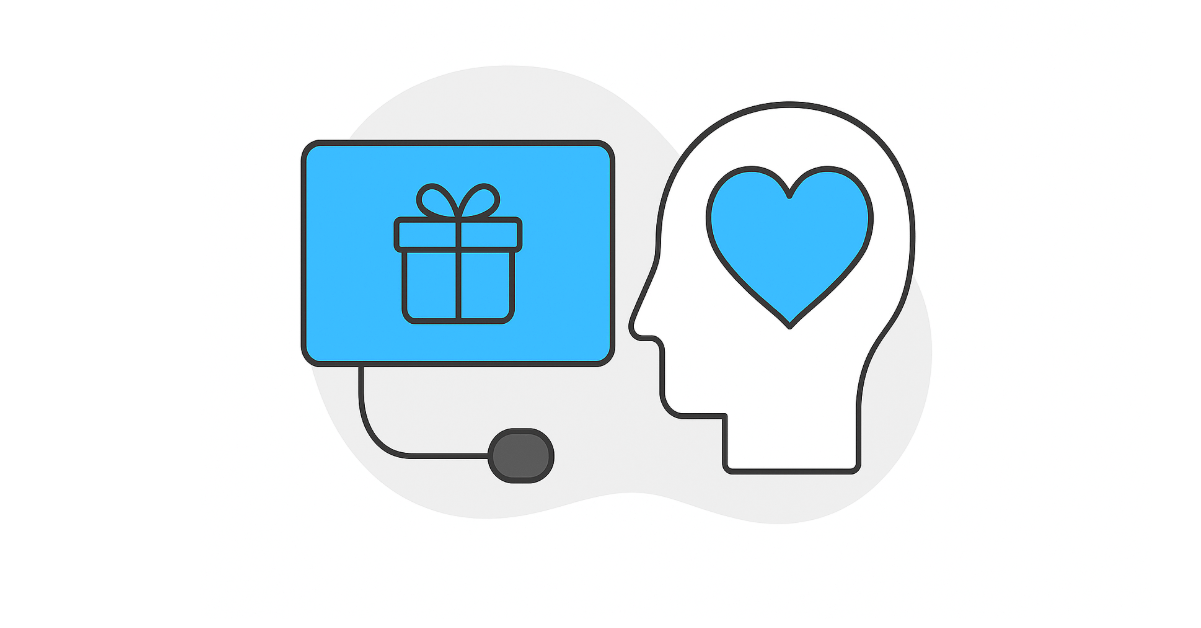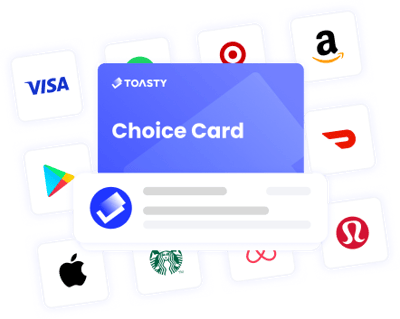Introduction: Recognition Is More Than a Transaction
Every organization wants motivated, loyal, and high-performing employees — but traditional bonuses and pay raises alone aren’t enough anymore.
In today’s workplace, employees are looking for more than compensation. They want meaning. They want connection. They want to feel seen.
That’s where understanding the psychology of employee rewards becomes essential. Recognition isn’t just about giving something — it’s about what it signals.
Modern research in behavioral psychology shows that well-designed rewards — like personalized, choice-driven gift cards — tap into intrinsic motivation and help build a lasting recognition culture that fosters engagement and belonging.
And with platforms like Toasty Card, HR teams can make that happen seamlessly — turning everyday appreciation into a psychologically rewarding experience that truly resonates.
The Psychology of Employee Rewards — Why It Matters

To motivate people effectively, you have to understand why they act — and how they feel when rewarded.
The Science Behind Recognition
Psychologists have long studied what drives human motivation. According to Self-Determination Theory (SDT), motivation exists on a spectrum — from extrinsic (doing something for external reward) to intrinsic (doing something for internal satisfaction).
In the workplace, the best recognition programs blend both: they offer tangible rewards that reinforce intrinsic feelings of pride, competence, and belonging.
Why Recognition Outperforms Cash
A study from Harvard Business Review found that employees who received consistent recognition from their managers were more than 40% more engaged than those who did not.
While money fades into the background, thoughtful recognition — even a small token like a digital gift card — leaves an emotional imprint.
It’s not about the amount; it’s about the meaning.
The Shift from Extrinsic to Intrinsic Motivation
Beyond Paychecks and Perks
Extrinsic motivators — like cash bonuses — spark short-term performance but rarely sustain engagement. Once received, they quickly lose impact due to what psychologists call the “hedonic treadmill”: people adapt, and the boost fades.
Intrinsic motivators, on the other hand, trigger long-lasting satisfaction. When employees feel valued, trusted, and connected, they’re motivated to perform because they want to, not because they have to.
How Gift Cards Bridge the Gap
This is where modern recognition tools like Toasty Card shine.
They’re extrinsic by design — a tangible reward — but they also activate intrinsic feelings of autonomy and appreciation.
By letting employees choose what matters most to them, gift cards align with their personal values and preferences. That autonomy fuels internal satisfaction — the psychological sweet spot between extrinsic and intrinsic motivation.
The Emotional Layers of Recognition
Recognition touches on three universal human needs: competence, autonomy, and relatedness.
When rewards meet these needs, employees feel genuinely motivated and connected.
1. Competence — “I’m Good at What I Do”
When recognition affirms an employee’s skills and achievements, it strengthens confidence and purpose.
A personalized Toasty Choice Card celebrating a project milestone says, “We see your expertise.”
2. Autonomy — “I Have Control”
Choice enhances motivation. Instead of a one-size-fits-all reward, the Toasty platform lets employees decide how to celebrate — from experiences to essentials — empowering them to shape their own reward experience.
3. Relatedness — “I Belong Here”
Recognition fosters belonging. When an employee receives a thoughtful message alongside their reward, it builds emotional connection and reinforces their role in the company’s shared success.
Building a Recognition Culture That Lasts
What Is a Recognition Culture?
A recognition culture is one where appreciation isn’t occasional — it’s embedded in daily interactions, peer relationships, and leadership behaviors.
In such cultures, recognition becomes contagious. Teams celebrate each other naturally, creating a positive feedback loop of morale and motivation.
How Gift Cards Reinforce Recognition Culture
Digital rewards, when delivered thoughtfully, help make recognition scalable and consistent.
With Toasty Card, managers can automate recurring events — birthdays, anniversaries, achievements — while adding a personal message that makes every gesture feel genuine.
Over time, this consistency shapes culture. Recognition becomes habitual — and belonging becomes instinctive.
Why Gift Cards Resonate More Than Traditional Rewards
It’s easy to underestimate the power of something as simple as a digital gift card — but its impact lies in psychology, not price.
1. Freedom of Choice
Giving employees flexibility respects individuality. It tells them, “We trust you to decide what feels rewarding.”
That autonomy strengthens intrinsic motivation far more than a preselected item ever could.
2. Instant Gratification
Recognition delayed is recognition denied. Digital cards, delivered instantly through platforms like Toasty, meet the psychological need for timely feedback and reinforcement.
3. Tangible but Personalized
Cash is abstract; a branded Toasty Choice Card, customized with a heartfelt note or company logo, feels more intentional and memorable.
4. Universally Inclusive
Global teams need recognition that transcends borders and preferences.
Toasty’s international reach ensures every employee — wherever they are — feels equally valued.
The Neuroscience of Feeling Valued

Let’s go deeper. Neuroscience shows that recognition activates the brain’s reward system — the same one triggered by social approval and trust.
When someone is recognized:
- Dopamine levels rise (creating pleasure and motivation).
- Oxytocin increases (strengthening connection and belonging).
- Cortisol decreases (reducing stress and disengagement).
The takeaway? Recognition literally rewires the brain for loyalty.
A timely digital gift card, paired with genuine praise, creates a neurological reward loop that motivates employees to repeat great performance.
Integrating Psychology Into Your Recognition Strategy
Want to harness the psychology of rewards effectively? Here’s how to do it:
1. Make It Meaningful
Every reward should connect to a specific behavior or achievement. Generic recognition doesn’t trigger intrinsic motivation.
2. Keep It Timely
Recognition is most powerful when it’s immediate. Automation ensures no delay — Toasty’s platform can trigger instant delivery after milestones.
3. Personalize the Message
Pair every gift card with a sincere note.
Even a short message — “You made a big difference this week” — creates emotional resonance.
4. Encourage Peer Recognition
When appreciation comes from colleagues, it builds social trust and strengthens team belonging.
5. Measure and Refine
Use data to track which types of recognition spark engagement. Toasty’s analytics show redemption patterns and employee response rates to help refine your approach.
Case Example — Turning Rewards Into Belonging
Imagine this scenario:
A global marketing team just completed a major product launch. Instead of sending a generic “thank you,” the manager uses Toasty to send personalized Choice Cards with a message reflecting each team member’s contribution.
- The designer receives a card and a note recognizing creativity.
- The analyst is praised for data precision.
- The project lead is thanked for leadership and communication.
Each person feels seen — not just rewarded. That emotional validation builds loyalty far more powerful than any one-time bonus.
Why Toasty Choice Card Fits the Psychology of Motivation
|
Psychological Principle |
How Toasty Supports It |
|
Autonomy |
Employees choose their reward from hundreds of global brands. |
|
Competence |
Rewards can be tied to measurable goals and achievements. |
|
Relatedness |
Personalized notes and branded messages strengthen connection. |
|
Timeliness |
Instant digital delivery reinforces positive behavior immediately. |
|
Inclusivity |
Works across countries and currencies for global teams. |
Toasty doesn’t just automate rewards — it humanizes them, making every “thank you” a meaningful experience that aligns with intrinsic motivation.
The ROI of Psychological Recognition
HR leaders often ask: “Can something as simple as a gift card really move the needle?”
Absolutely — because when recognition meets human needs, performance follows.
- +41% higher retention in companies with regular recognition programs (Gallup, 2024)
- 4x more engagement when employees feel their contributions are valued
- 50% less burnout in teams where recognition is timely and specific
When you apply the psychology of employee rewards strategically, you’re not just giving — you’re investing in long-term culture and performance.
Conclusion: From Bonus to Belonging
The most effective recognition doesn’t just reward effort — it reinforces identity.
When employees feel genuinely seen, valued, and empowered, they don’t just perform better — they belong.
That’s the heart of the psychology of employee rewards: turning extrinsic gestures into intrinsic motivation, and transforming ordinary moments into culture-shaping experiences.
With Toasty Card, you can bridge science and sincerity — delivering rewards that move beyond transactions into true connection.
Ready to turn recognition into belonging?
Empower your team with meaningful, psychology-backed rewards that inspire.
FAQs: Understanding the Psychology of Employee Rewards
Q1. What is the psychology of employee rewards?
It’s the study of how recognition and incentives affect motivation, behavior, and engagement in the workplace. Rewards work best when they meet psychological needs for autonomy, competence, and belonging.
Q2. What’s the difference between intrinsic and extrinsic motivation?
Extrinsic motivation comes from external rewards (like bonuses or prizes), while intrinsic motivation comes from internal satisfaction — pride, purpose, or passion for the work itself.
Q3. How do gift cards encourage intrinsic motivation?
When gift cards offer choice and personalization, they give employees a sense of autonomy and recognition — key triggers for intrinsic motivation.
Q4. How can I build a recognition culture?
Start small: encourage daily appreciation, automate milestones, and empower peers to recognize one another. Over time, these habits form a lasting recognition culture.
Q5. Why use Toasty Card for recognition?
It combines the psychology of meaningful rewards with modern delivery: instant, global, customizable, and personal. Toasty helps companies make recognition effortless yet heartfelt.




